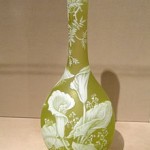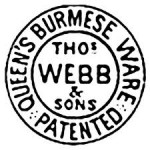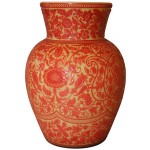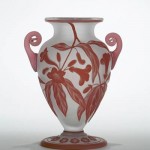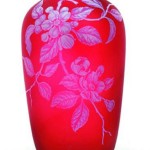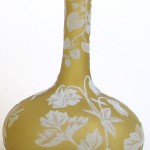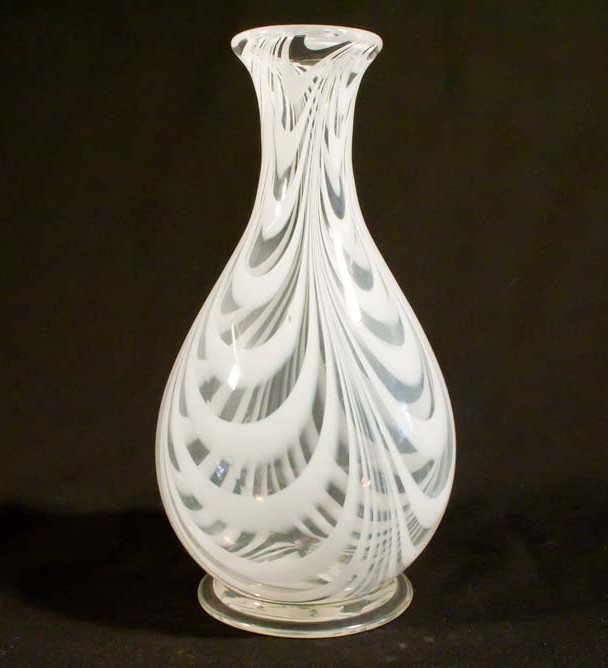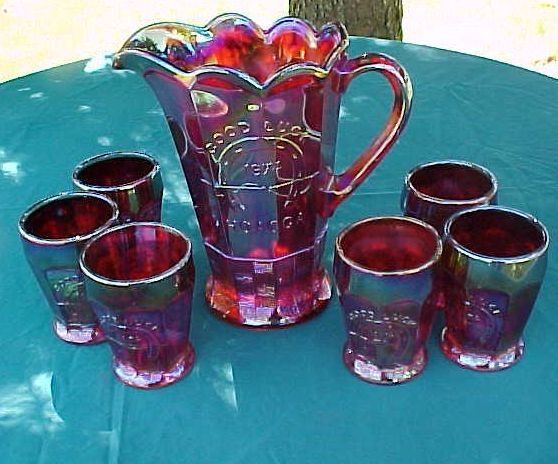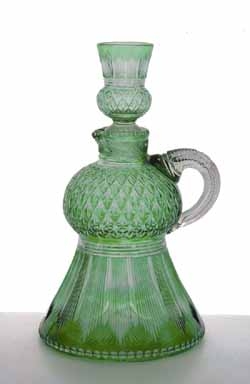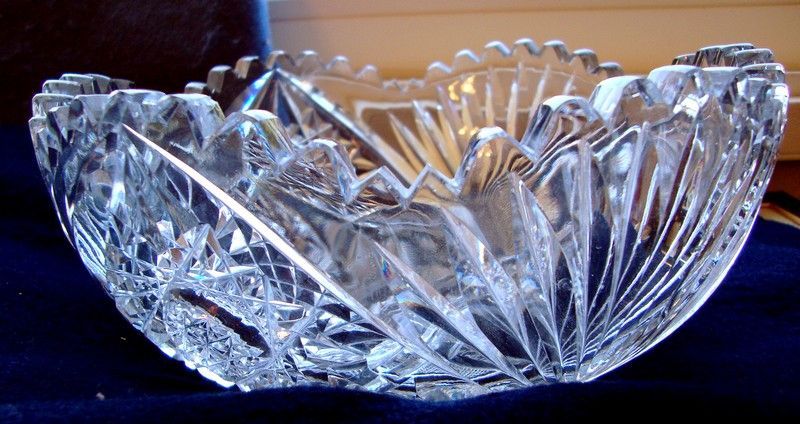Probably the most famous Victorian glasshouse was located in Stourbridge, England. Known for innovative design and techniques in glassmaking. Thomas Webb glass, particularly scent/perfume bottles are always collectable.
Predominantly famous in glass circles for rock crystal and English cameo glass.
Rock Crystal Glass
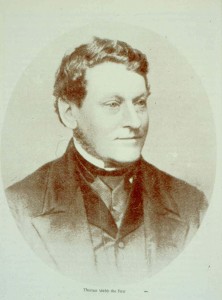 The glass body is thick imitating natural rock crystal. The glass was finely carved to imitate Renaissance lapidary techniques. The style originated in Bohemia and was brought to the English manufacturers by the following craftsmen
The glass body is thick imitating natural rock crystal. The glass was finely carved to imitate Renaissance lapidary techniques. The style originated in Bohemia and was brought to the English manufacturers by the following craftsmen
Frederick Engelbert Kny – (active 1870’s-1920’s) Master glass engraver from Bohemia. Employed teams of workers at the Platt workshop including his own sons.
William Fritsche – (active 1870’s) Bohemian master glass engraver. Worked in Classical style engraving naturalistic and figurative subjects. Fine detailing particularly plumage on birds and verdant foliage.
Detail of a peacock feather motif from an extremely rare cameo solifleur vase by Thomas Webb.
Cameo Glass
The leading exponents of the Cameo glass technique at Thomas Webb & Sons were:
Thomas and George Woodall – (Brothers) English glass engravers made the finest classically inspired English cameo glass. They were responsible for changing the thinking concerning cameo glass colours turning away from the traditional pinky hues to vibrant reds, blues and yellows. The extended range of colours were particularly suited to the manufacture of ladies perfume bottles, often called scent bottles.
For collectors of scent/perfume bottles the most desirable is nearly always a cameo glass example preferably with a silver cap known as a mount. Webb, Stevens & Williams and Stuart made standing and ‘laying-down’ types of Cameo glass bottles.
Information – Andrew Lineham Fine Glass


